It arises from two simple phenomena- Convection and Coriolis force. You may have seen convection currents in a vessel filled with water that is being heated.
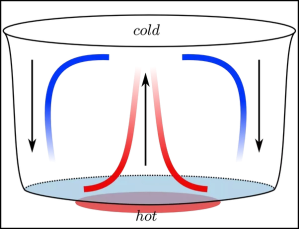
Bottom of the vessel is hot. Hot water is less dense and rises above cold water. This happens with air also. Air near the equator is hot and near the poles is cold. So a general guess about how air would move in the Earth’s atmosphere could be something like this
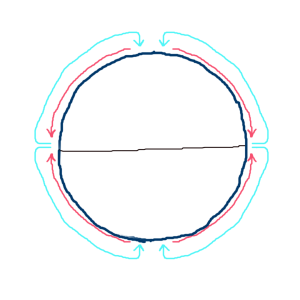
But this doesn’t tell the whole story. The thickness of Earth’s atmosphere is very small compared to the distance from pole to equator. In order to take this factor into account, we do our first experiment – heating water in a vessel, in a long vessel this time. We see that many cells form this time.
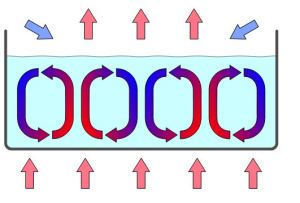
And this gives a better picture of atmoshpheric motion of air. In atmosphere, the long range motion of air from equator to poles breaks down into three smaller motions called cells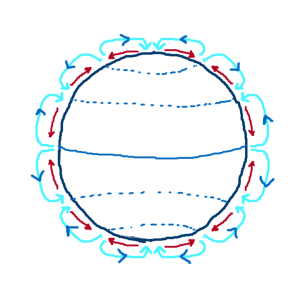
So the kind of wind that they should induce on the Earth’s surface should look like this
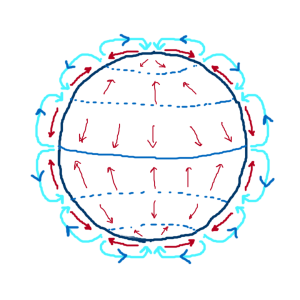
Which is actually pretty close to the actual pattern. The last remaining piece is the Coriolis Force. An object in a rotating frame experiences a sideways push called Coriolis force which causes the deflection of winds. Winds which are coming out of the screen are pushed to the left and others to the right. This gives us the Earth’s actual wind pattern
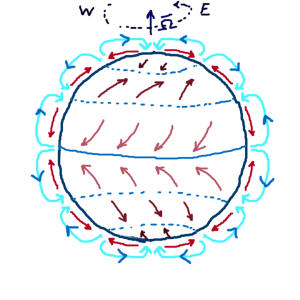
Tada!…These are the Trade winds, the Westerlies and the Easterlies.
Convection cells image credit: By I, Eyrian, CC BY-SA 3.0, https://commons.wikimedia.org/w/index.php?curid=2525196
Convection image credits: https://www.mis.mpg.de/applan/research/rayleigh.html
Analogy to long container does not seem apt. Should the long container be only heated in the centre as the earth is also hotter in the centre / at equator?
LikeLike
Analogy with long container does not seem apt. Shouldn’t the long container be heated only at the centre as earth is hotter at the equator?
LikeLike
Yes, it better models the Earth’s system. The effect of heating just the centre is to produce convection cells of different sizes, which is what actually happens. Polar cell is longer than others, I think. This is known as Rayleigh Bernard convection and can be seen if we heat a thin layer of oil in a pan. Uniform heating gives uniform cells. Just heating the centre gives non uniform, more turbulent cells.
LikeLike
Awesome article. Crisp and super informative. Can you give an example of Coriolis Force just like the one you gave for convection?
LikeLike